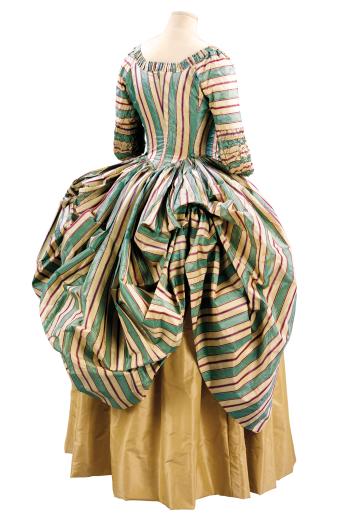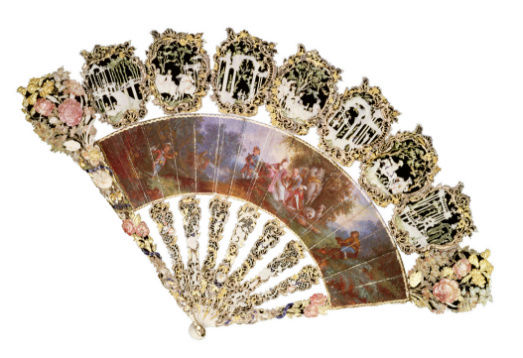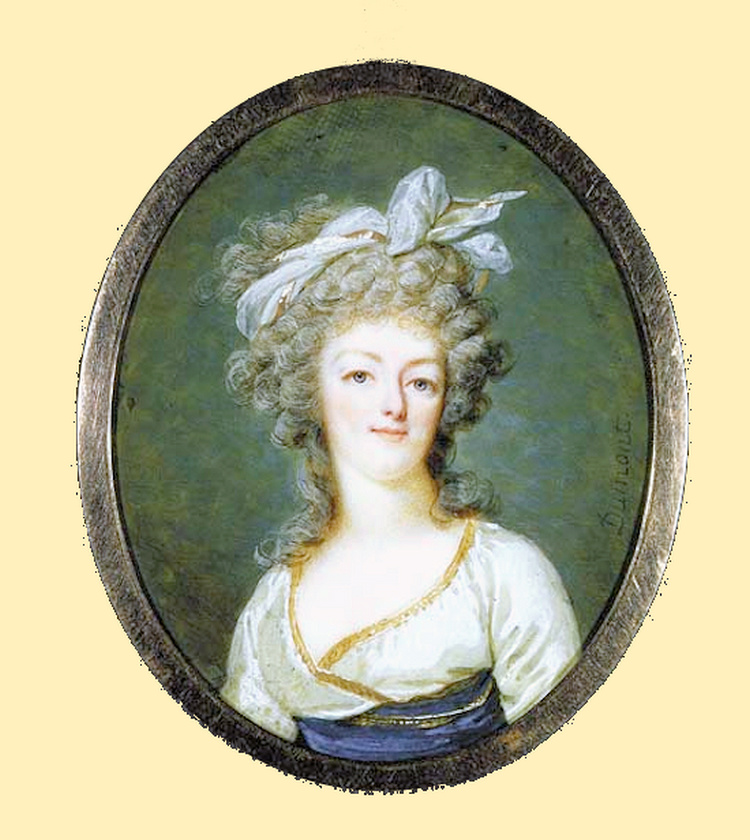Maria Cosway

Nombre de messages : 733
Date d'inscription : 05/07/2015
 |  Sujet: Marie-Antoinette’s Style Revolution Sujet: Marie-Antoinette’s Style Revolution  Mar 14 Fév - 8:15 Mar 14 Fév - 8:15 | |
| I want to share with you this beautiful contribution about style and fashion !  Versailles was the center not only of French political power but also of French fashion. Since the reign of Louis XIV, French aristocrats looked to royalty to know what not to wear. The French court had been governed by strict rules that determined the proper type of frocks, fabrics, and accesories to be donned for the season, time of day, and occasion. Louis XIV’s reign in the early 1700s was dominated by the baroque style of art, music, architecture, and haute couture. Ornate decorations, rich, dark fabrics, and elaborate, heavy designs dominated courtier couture under the Sun King. Versailles was the center not only of French political power but also of French fashion. Since the reign of Louis XIV, French aristocrats looked to royalty to know what not to wear. The French court had been governed by strict rules that determined the proper type of frocks, fabrics, and accesories to be donned for the season, time of day, and occasion. Louis XIV’s reign in the early 1700s was dominated by the baroque style of art, music, architecture, and haute couture. Ornate decorations, rich, dark fabrics, and elaborate, heavy designs dominated courtier couture under the Sun King.
After Louis XIV’s death in 1715, clothing styles began to evolve. Fashion took a turn to a lighter, more frivolous style, transitioning from baroque to rococo. The latter period was characterized by pastel colors, more revealing frocks, and lots of frills, ruffles, bows, and lace. This look spread from France and was copied by the elite in other European capitals. Marie-Antoinette gives a concert in this 1775 painting by Jean-Baptiste-André Gautier-Dagoty. Museum of Versailles Marie-Antoinette gives a concert in this 1775 painting by Jean-Baptiste-André Gautier-Dagoty. Museum of Versailles
PHOTOGRAPH BY ERICH LESSING/ALBUMCOSTUME CHANGESMarie-Antoinette was an Austrian princess before she married Louis XVI in 1770. Clothing had always been a powerful signifier of nationality. When the young princess traveled from Austria to France to be married, her entourage stopped at the border between the two countries. There, Marie-Antoinette was stripped of all her Austrian clothes and dressed with clothing made in France. The ritual signified her transformation from Austrian to French.
After becoming queen in 1774, Marie-Antoinette embraced her new nation’s passion for fashion. Her enthusiasm for clothing fit into the wider culture that reigned at Versailles. In the 18th century, it was every highborn lady’s ambition to impress at court with her clothing, no small undertaking. The pressure of conspicuous consumption at Versailles, and the complex rules of fashion etiquette, dictated that women ought not wear the same outfit more than once—not, at least, without some carefully chosen, and costly, modification.BIGGER IS BETTERThe taste for spectacular women’s clothing resulted in a return to exceptionally wide skirts held up by a frame underneath. Known as the guardainfante, a distinctive feature of earlier, 17th-century Spanish fashion, the skirt was initially designed to hide pregnancies. It was reimagined in the first half of the 18th century as the pannier, in an allusion to the skirt’s inverted basket shape. Panniers could reach huge sizes, as much as 16 feet in diameter. This type of clothing was never intended to be comfortable or practical. For instance, two women could not pass one another in a doorway or sit beside one another in a carriage.
Unlike the 17th-century guardainfante, the French pannier shifted the skirt’s volume to the hips, an effect accentuated by the corset, which raised the bustline and narrowed the waist. It was tied at the back with straps, so a noblewoman needed a servant’s help to get dressed. Her undergarments would have consisted of a long camisole that reached to her knees, and a petticoat that extended from the waist down to the ankles.
The best known variant of this court fashion was the robe à la française or sack-back gown, which came into its own in the 1740s in France when it was popularized by Madame de Pompadour, the mistress of Louis XV. It had a less exaggerated shape than previous dresses, allowing for greater mobility. Madame de Pompadour favored frills and lace and liked to highlight her neck with velvet adorned with a flower or jewel.

Polonaise from 1775, Victoria and Albert Museum, London
PHOTOGRAPH BY VANDA IMAGES/PHOTOAISA
A series of somewhat less formal women’s dresses was introduced around the 1760s. One of these was the polonaise, which was inspired by styles of dress from Poland. It had a tight-fitting body and was bulky at the back where it was gathered up with a cord. It was shorter than the French dress, allowed the underskirt and ankles to be seen, and was easier to move around in.Another dress that became fashionable in France was the robe à l’anglaise, an example of the growing taste for all things English among well-to-do French. This dress included elements inspired by male fashion, such as a short jacket, broad lapels, and long sleeves. The redingote, for example—derived from the words “riding coat”—was halfway between a cape and an overcoat.
Accessories were just as important to a woman’s appearance as her dress. At any official ceremony ladies were required to cover their hands and arms with gloves if their clothes were sleeveless. The dictates of fashion said that only in the summer could they wear gloves revealing half the length of their fingers.
One of the most important of all accessories was the fan. The culture of Versailles mingled flirtation with concealment, and fans were used to send flirtatious signals as part of a complex, gestural language of seduction. Rococo French Fan, 1730, Czartoryski Museum, Krakow Rococo French Fan, 1730, Czartoryski Museum, Krakow
PHOTOGRAPH BY BRIDGEMAN/ACITHE BUSINESS OF FASHIONUnderlying the frivolity of 18th-century French fashion were hard economics. The appetite for clothes among the French upper classes gave rise to a dynamic textile industry, which had been assiduously guarded by the protectionist policies introduced by Jean-Baptiste Colbert, minister to Louis XIV. The so-called royal manufactories helped foster a booming silk industry in Lyon. Technical progress and advances in dying further bolstered private enterprise, and factories turning out stockings, hats, and lingerie thrived. Christophe-Philippe Oberkampf’s textile factory at Jouy-en-Josas, for example, employed some 900 workers in 1774.
Notable 18th-century French fashion designers included Marie-Jeanne Bertin, also known as “Rose,” who pioneered French haute couture in the late 18th century. She opened her own fashion store in Paris in 1777, and quickly became the dressmaker of choice. Recognition of her talents was cemented by the Duchess of Chartres, who introduced her to Marie-Antoinette herself. The queen was so taken by her designs she had a workshop built for her in Versailles where Rose, her “Minister of Fashion,” created ever more extravagant designs for the queen. Her creations were exported to courts in London, Venice, Vienna, Lisbon, and many other capitals.
Rose also created dolls attired in specially made clothes. These were bought by collectors, or sent as gifts to other European courts. These figurines also allowed foreign ladies to keep up with the French fashions and order the latest, most elegant dresses. Marie-Antoinette helped keep France the capital of European fashion throughout the 19th and early 20th centuries.
On one occasion, Joseph II of Austria commented that the elaborate wig worn by his sister Marie-Antoinette was “too light to bear a crown.” It was understandable that the Austrian emperor would draw a parallel between his sister’s style of dress and her role as queen: Marie-Antoinette’s lavish wardrobe only increased her image as a frivolous spendthrift, one of the principal reasons why she became despised by the French people. This antipathy would eventually bring down the monarchy and lead her to the guillotine in 1793.By María Pilar Queralt del Hierro http://www.nationalgeographic.com/archaeology-and-history/magazine/daily-life-france-fashion-marie-antoinette/
_________________
Who knows what lies beneath ?
|
|
